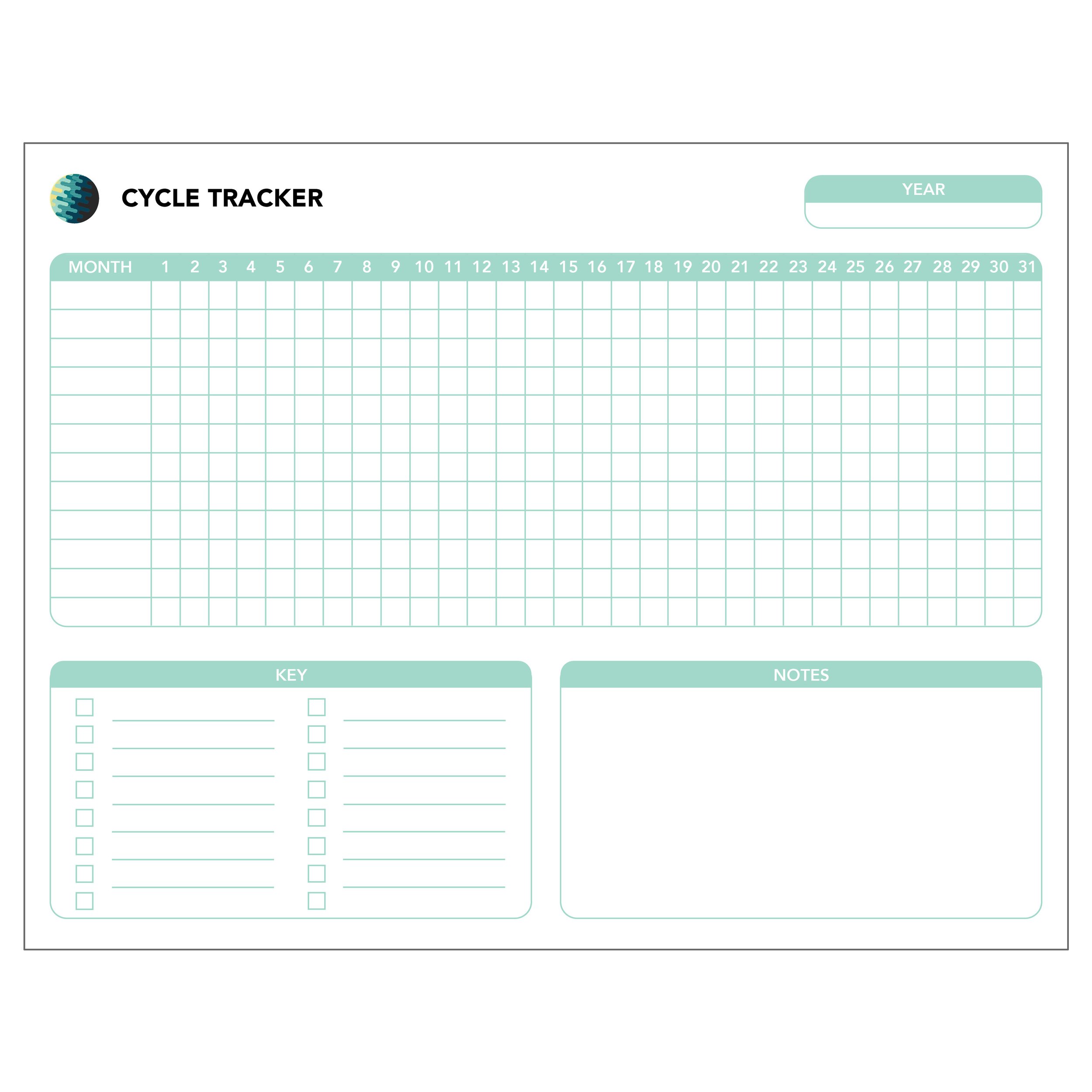Cycle Tracker
On a basic level, period tracking predicts when your next period will arrive. However, it can also be crucial to understanding all the phases of your cycle and related hormone fluctuations.
Menstruation describes the week your uterine lining sheds, but the menstrual cycle continues in four phases: Menstrual, Follicular, Ovulation, and Luteal. Each of these phases come with unique hormonal shifts that can affect energy levels, cramping, cravings, focus, and many other aspects of daily life.
Once you understand your cycle, you can combat related symptoms. Establishing the rhythm of hormone fluctuations means you can build on high-energy days, take care of yourself on low-energy days, and improve your overall physical and mental health now and in the future.
Why it’s important for you to track your cycle:
Track to see if your cycle length is regular or irregular. An irregular period can come like clockwork, but if your cycle length is consistently under 21 days or longer than 35, you have an irregular period.
Track your symptoms early on to see if they are irregular. Many symptoms and period pains are brushed off, but they could be signs of underlying issues such as endometriosis.
Using the tracker to get pregnant (or not).
What Happens During the Menstrual Cycle?
During each menstrual cycle, an egg develops and is released from the ovaries. The lining of the uterus builds up. If a pregnancy doesn’t happen, the uterine lining sheds during a menstrual period. Then the cycle starts again.
The menstrual cycle is divided into four phases:
Menses (or Menstrual) Phase: This phase, which typically lasts from day one to day five, is the time when the lining of your uterus is shed through your vagina if pregnancy has not occurred. Most people bleed for three to five days, but a period lasting only two days to seven days is still considered normal.
Follicular Phase: This phase typically takes place from days six to fourteen. During this time, your estrogen levels rise, causing the lining of your uterus (endometrium) to grow and thicken. In addition, another hormone, follicle-stimulating hormone (FSH), cause the follicles in your ovary to grow. During day 10 - 14, one of the developing follicles will produce a fully mature egg (ovum).
Ovulation: This phase typically takes place roughly day 14. A sudden increase in the luteinizing hormone (LH) causes your ovary to release the mature egg. This event is called ovulation.
Luteal Phase: This phase lasts from about day 15 to day 28. After the egg is released from your ovary, it begins to travel through your fallopian tubes to your uterus. The hormone, progesterone, rises to help your uterine lining for pregnancy. If the egg is fertilized by a sperm and attaches to the uterine wall, you become pregnant. If pregnancy does not occur, estrogen and progesterone levels drop. The thickened lining of your uterus is sheds in the menstrual phase.
The average cycle length is 28 days, but can last between 26 and 35 days. The length of each phase can differ between women and change over time.
How to Calculate Your Cycle Length:
Your cycle starts on the first day of the period until the first day before your next period. The time between counts as one cycle.
What is Considered a Regular Cycle?
Your cycle is consistent and lasts between 26 and 35 days
One irregular period every now and then is not usually a cause for concern
What is Considered an Irregular Cycle?
Your cycle can be consistent, but is shorter than 21 days and longer than 35
If your cycle varies from month to month and varies more than 7 days
What causes an Irregular Cycle?
Puberty—your periods might be irregular for the first year or two
The start of menopause (usually between the ages of 45 and 55)
Early Pregnancy
Some types of hormonal contraception—such as contraception pills or intrauterine systems (IUS)
Extreme weight loss or weight gain
Medical conditions (such as PCOS) or a problem with your thyroid
Irregular periods are not always a sign of a problem. Occasionally it is a good idea to see a doctor about them (just in case).
Why track Ovulation?
Tracking ovulation can help determine the best time to get pregnant or avoid sexual intercourse to prevent pregnancy.
How to Calculate Ovulation
(Your Cycle Length) - (Luteal Phase of 14 days) = Day you Ovulate
Using a Cycle Tracker for Pregnancy:
Only works for regular cycles
Egg only lives for 24 hours, but sperm can live for 5 days
Your optimal fertility window would start 5 days prior your period


